Do Not Miss These Lent Traditions in Malta & Gozo
by Tiziana Micallef

As the loud and colourful Carnival events are now already history, Malta & Gozo have fallen quieter — or so you think! In the run-up to the Holy Week, and ultimately Easter Sunday, the liturgical calendar kicked off Lent on what is referred to as Ash Wednesday. After Mardi Gras (Fat Tuesday), the last day of Carnival week, during which food and 'prinjolata' abundance are a must, the Catholic Church (as a yearly pin) started the 40-day penitential period to commemorate the 40 days Jesus Christ spent in the desert fasting and battling against Satan's temptations.
With over 80% of the Maltese population identifying as Roman Catholics, it's definitely hard to miss Lent-related activities around this time.
In this article, we will be putting our focus on some of the most popular cultural Lent traditions — food and art traditions that are still very much alive and sought after by both locals and tourists to this day. An experience that's only witnessed around the four corners of Malta & Gozo.
Kwarezimal
Referred to as Lenten Biscuits in English, these almond-based non-fat delicacies are a primary food tradition in Malta and Gozo when fasting during Lent. Throughout this period, the 'Kwarezimal' is sure to be found at every point of sale in grocery shops, supermarkets, cafeterias and confectioneries. Don't be surprised if you happen to bump into a fruit and vegetable hawker or also stationery that sells 'Kwarezimal' as well!
But, wondering what's the story behind 'Kwarezimal'? Well, it's quite as grand as their taste! The origins of 'Kwarezimal' go back to the time of the Knights of Malta. A period of time during which Lent was more practised than nowadays — meaning that people abstained from eating animal products or animal meat in a rigorous way. Interestingly, Maltese seek to avoid sugary treats during Lent nowadays, but in the past, they were actually accepted because sugar was considered a spice, thus a savoury. In fact, sugar is one of the main ingredients in 'Kwarezimal'.

The word 'Kwarezimal' is of Latin origin from the word 'quaresima', which means Lent. Hence, the massive popularity of these traditional Maltese biscuits during the 40 days of Lent. If you want to prepare some 'Kwarezimal' at home the recipe is quite basic and straightforward, even though you might find some recipes with a twist.
Qaghaq tal-Appostli
During Lent, bakers increase their dough production to prepare 'Qaghaq tal-Appostli' or Lenten Bread. Traditionally, 'Qaghaq tal-Appostli' is linked to the period of the Knights of St John. However, this food tradition can also be related to past Lebanese Christians and oriental Christians, particularly Greeks and Armenians, who didn't only have an important role in Malta's Christian community but also left their influences through culinary traditions related to Easter.
Moving on to bread-making, in the past, 'Qaghaq tal-Appostli' was baked slightly differently than today's method. Dough-making featured mixing flour with ground almonds, and most probably honey or sugar and cumin seeds as well. The look was also slightly different than today. Although the shape was round, bakers used to braid three rolls of bread together and then form them in the shape of a ring.

Sfineg tal-Incova
The variety of traditional Maltese dishes to eat during Lent is quite vast even though it contradicts what this period is about — limiting yourself from joyous foods! But, it seems like Maltese always found alternatives to make sure to still get the essential nutrients and enjoy food.
The 'Sfineg tal-Incova' is another good example of this. These traditional Anchovy Fritters are usually eaten on Good Friday and they consist of fried dough with an anchovy mix inside. It's very likely that the 'sfineg' are the result of Sicilian influence. In fact, in Sicily, there are the 'sfinci' which are practically the same but are served on Christmas Eve.
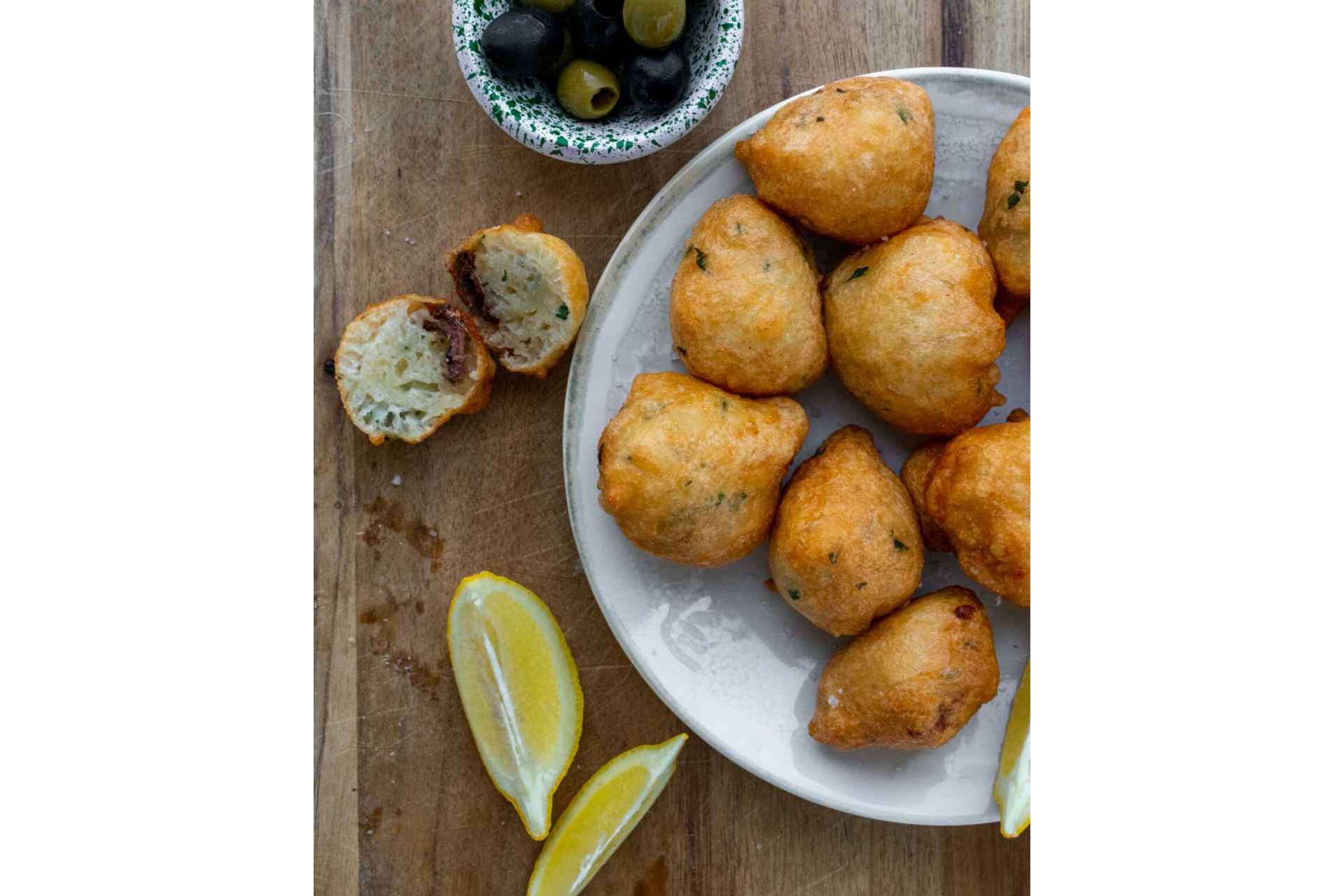
If anchovies are not your favourite, you are sure to find 'sfineg' filled with other ingredients, locally. These include cod or spinach. The latter is a primary ingredient in another yet traditional recipe during Lent in Malta — Spinach Pies (Qassatat tal-Ispinaci), which are easily found in Pastizzerias all over Malta and Gozo.
Karamelli tal-Harrub
These Carob Sweets are great proof that sugar intake during Lent was never forbidden. It was only in the 19th / 20th century that sugar was starting to be considered as breaking fasting. This might be due to the fact that at a certain moment, due to the poverty increase, products like sugar were considered luxuries. Hence, Lent provided that such life enjoyments were restricted.

Nonetheless, people who give up on sugar intake during the 40 days of Lent tend to fall for the 'Karamelli tal-Harrub' as an exception — despite the high level of sugar in these tiny brown glass-looking squares! Featuring a super crunchy texture, these traditional Carob Sweets are made from carob syrup, caramel and other spices. It requires quite a bit of skill in making them, as one needs to pour over a marble countertop the boiling caramel mixture and then cut it into small squares.

Love them or hate them, Carob Sweets are a staple in traditional Maltese cuisine. You can easily find them in small packets to carry around with you, and perhaps share with others (unless one is simply not enough for you)!
Other traditional Maltese foods linked to Lent include stuffed artichokes, 'bebbux bl-aljoli' (snails) and ricotta pie.
Now that you've drooled enough, we'll skip to the art side of customs attributed to Lent in Malta. Mainly, starting from the last Sunday (known as Palm Sunday) before Easter Sunday, the streets around Malta and Gozo are filled with different activities such as processions or pilgrimages, pageants, Christ's crucifixion reenactments and exhibitions focusing on the different episodes of the Passion of Christ.
The Seven Visits
On Maundy Thursday, the eve of Good Friday, after the Mass of the Lord's supper commemorating Christ's last meal with his apostles, Catholics take part in the Seven Visits (Is-Seba' Visti). This tradition lies in the fact that people visit seven different altars, i.e. churches, to pray and reflect at each, as a way to pay homage to the Altars of Repose. In doing so, they imitate Christ's path through the Stations of the Cross (Via Crucis). As an alternative to visiting different churches, many pilgrims choose to walk up the footpath leading to 'Salib tal-Gholja' (Laferla Cross) in prayer. The entire hill is pitch black with just candles lighting up.

Churches around the islands remain open and are dressed less than usual, with black or purple draping decorating the altar — a symbol of mourning Christ's death. Although silence takes over, you cannot miss the heavy monotone of the traditional 'cuqlajta'.
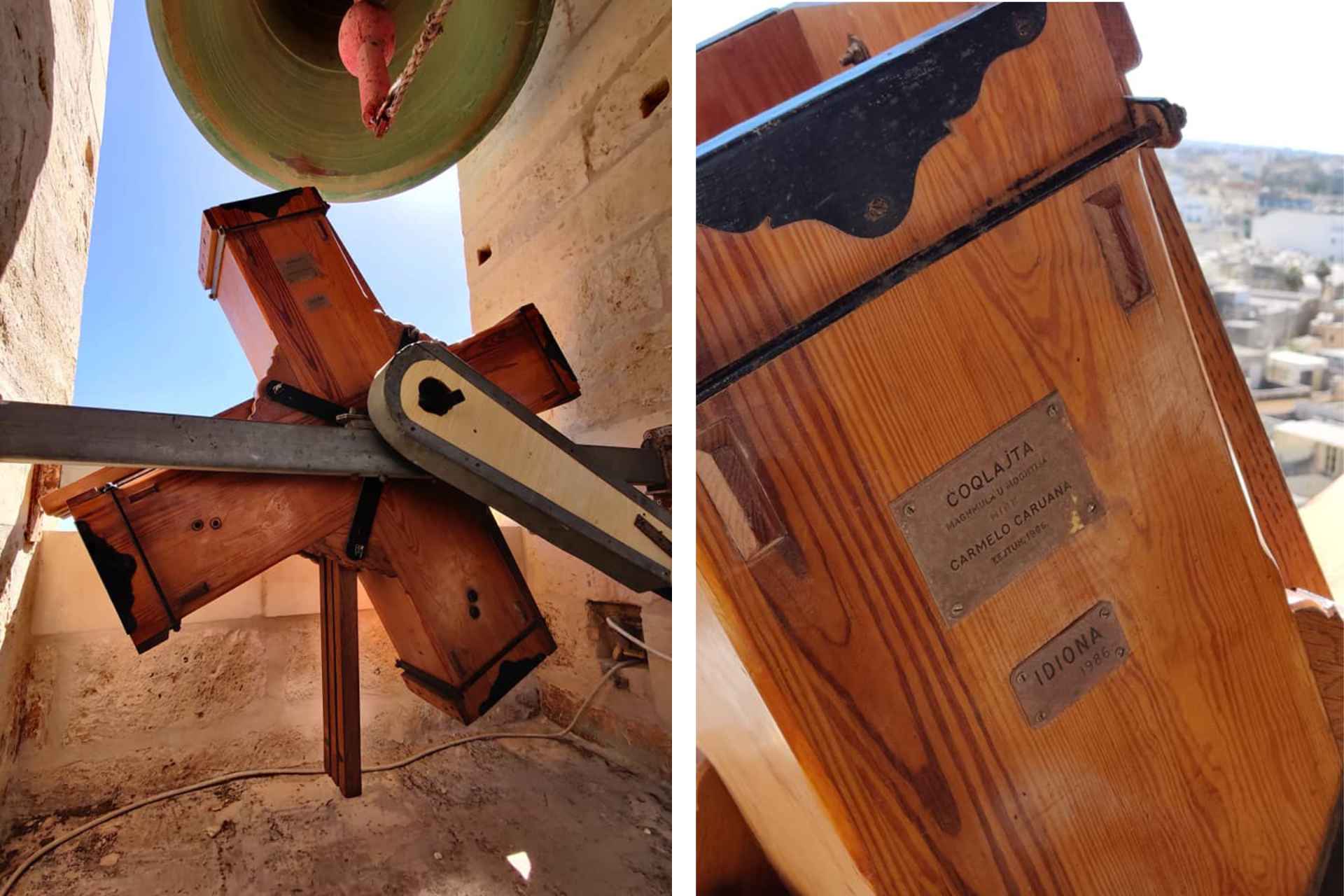
This wooden, rattle-style instrument replaces the joyous ringing of bells from churches' bell towers, and clack after clack, it creates a constant depressing tone as a symbol of grief until Holy Saturday.
Good Friday Activities
Good Friday is certainly the day which predominates during Holy Week. All churches are bare of any ornaments as a commemoration of Christ's death. Plus, most people don't work and use this day to visit different activities happening around local towns and villages.
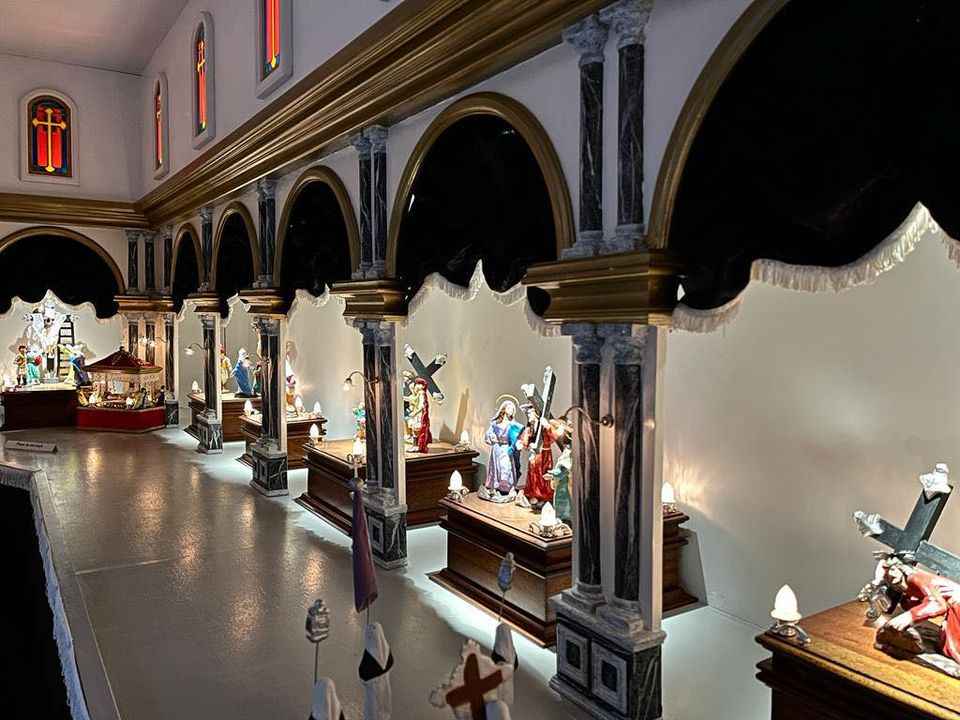
From street pageants to mini statue exhibitions representing stages from Christ's path towards death, visitors get to appreciate the artistic talent of those who dedicate their time to using different forms of art to recreate the Passion of Christ. During a pageant or a procession, you cannot miss out on the details in the clothing for which they would have been sewn specifically for the occasion. Each participant is dressed in Christ's period costumes from head to toe for truly realistic scenes.
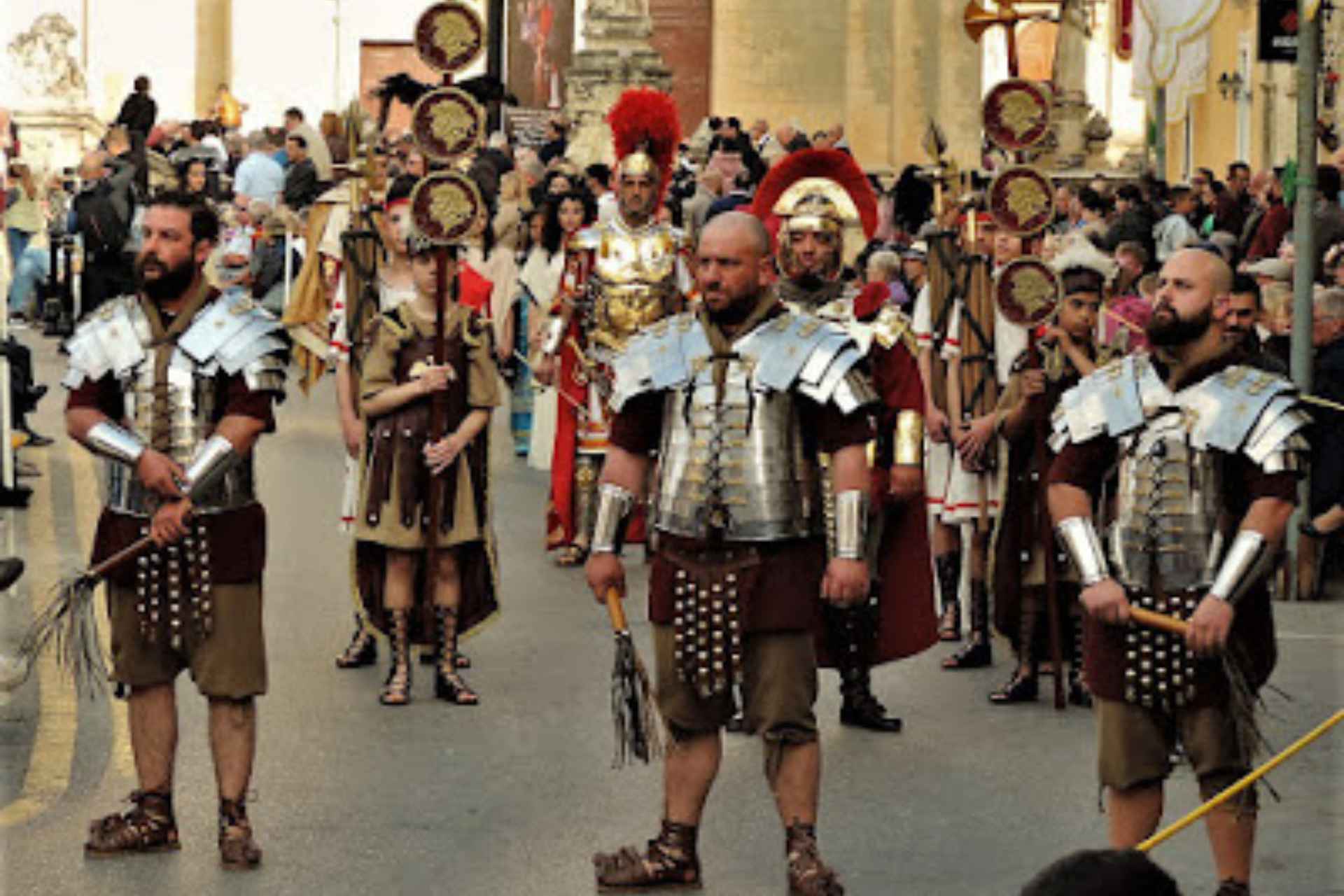
Some of the major towns and villages, also line up their set of Good Friday statues as part of their pageant. Although originally, the set consisted of eight representative statues in particular, throughout the years, some villages have added more. This has made Good Friday processions longer and more elaborate, featuring skilful carpentry and artistry for detailed representations.
Good Friday Artistic Exhibitions
Good Friday is always a fully-packed day with activities going on around Malta and Gozo. Exploring the outdoor activities is as equally fascinating as visiting artistic exhibitions held indoors — usually in the parish church hall or in a small space in its surrounding core area.
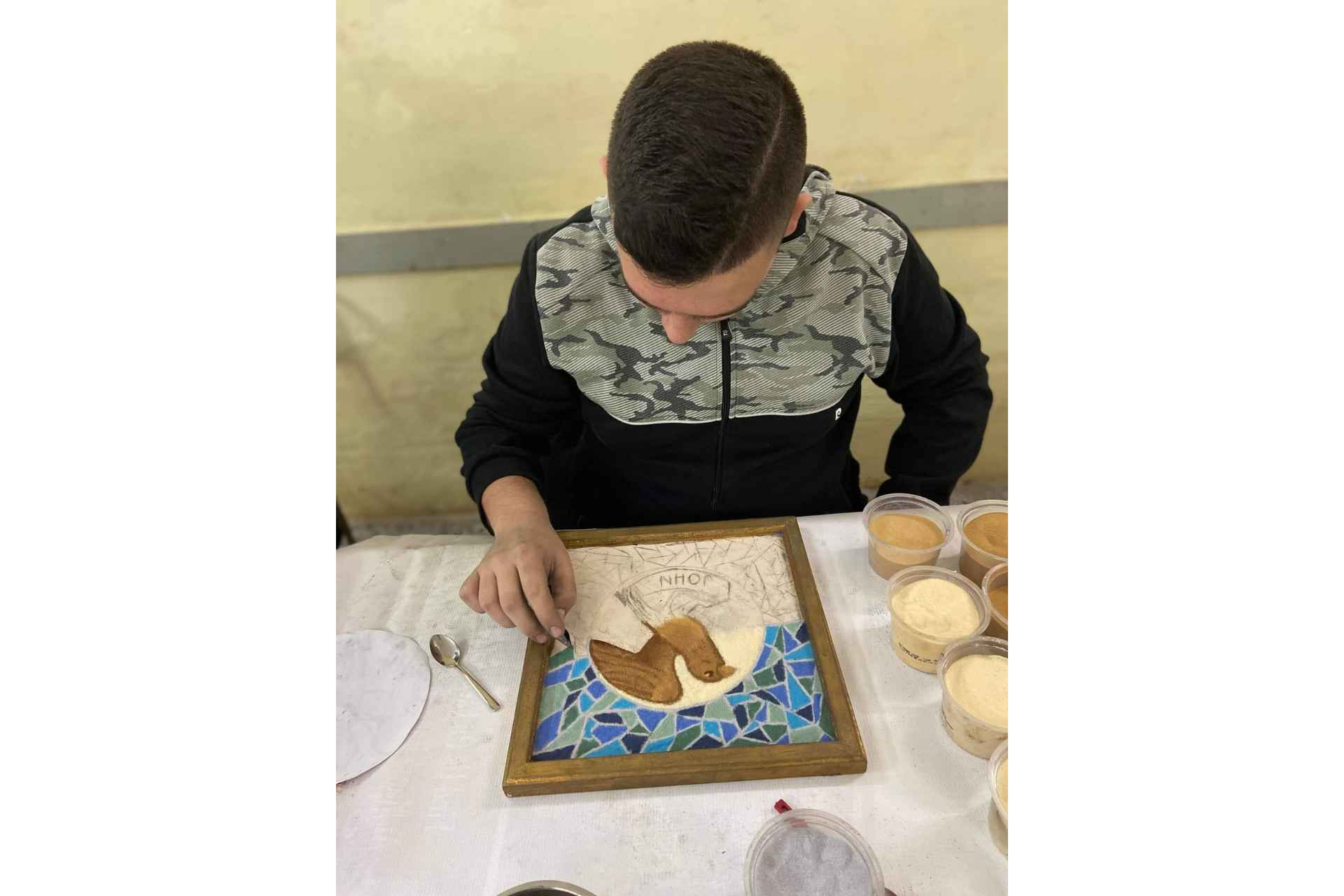
The Parish's organisations in towns and villages seek to create artistic scenes from Christ's Passion with the use of salt. By meticulous salt painting in different colours on a plate, talented and creative members of these voluntary groups are able to create various scenes or portraits linked to this Liturgical period. The final result is always impressive and at first sight, you won't be able to say that the image is actually made entirely with salt, or at least definitely not just with a pinch of salt!
Since creativity has no limits, you might also encounter this type of work done with the use of rice, small beans and other edibles. It's simply fascinating to look at these types of exhibitions around Malta and Gozo.
Last Supper Displays
Another attraction that's on during Holy Week is what in Maltese is known as 'Il-Mejda tal-Appostli'. Many towns and villages around Malta and Gozo recreate a lifesize or a model to scale, of the table used for Christ's last supper with his apostles. The details of such displays cannot certainly be unnoticed when taking a closer look at them. Starting from the type of food that's placed to the tableware and ambience that's recreated, visitors can have a clear idea of culinary traditions during Christ's period.

The main appeal when visiting the different exhibitions is certainly the unforgettable burning scent that's especially present during the period of Lent. This balsam is what really completes the whole experience — which mainly revolves around incense, balsamic and other spices burned together to create an imposing aroma suitable for the type of setting created.
Easter Sunday
The peak of Lent is definitely on Easter Sunday when locals get together to commemorate Christ's win over death with his resurrection. Apart from the special Sunday Mass to celebrate this important feast in the Liturgical calendar, it's what happens in the streets that's undoubtedly a main attraction to experience, at least once in your lifetime.
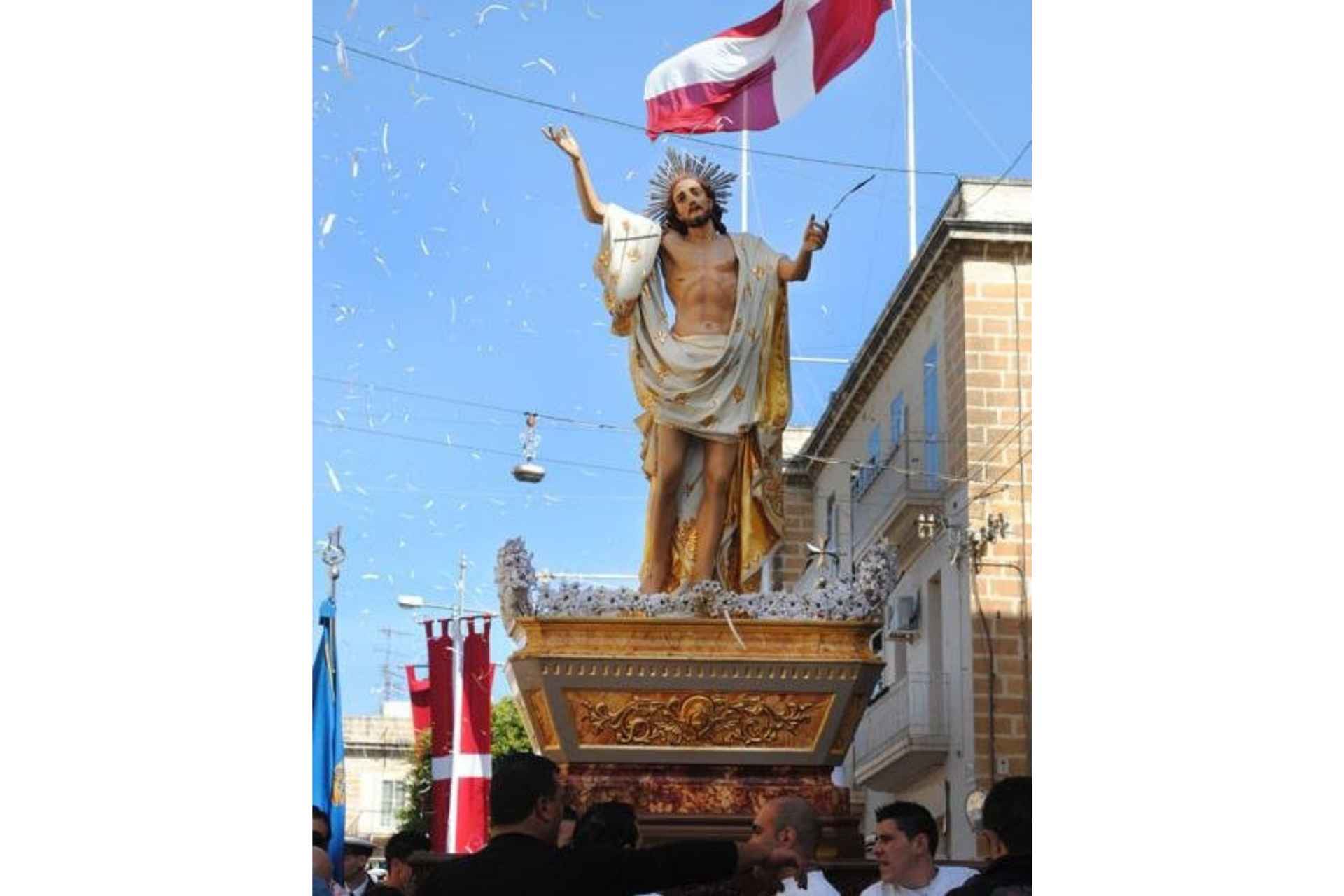
Whether or not you practise Christianity, on Easter Sunday you will want to go see the procession of 'L-Irxoxt' in one of the villages that organise it on a yearly basis. What's so special about it? Well, it is undoubtedly that stage when a group of people run the last stretch of the procession with the statue while the audience throws confetti and flowers from their balconies.
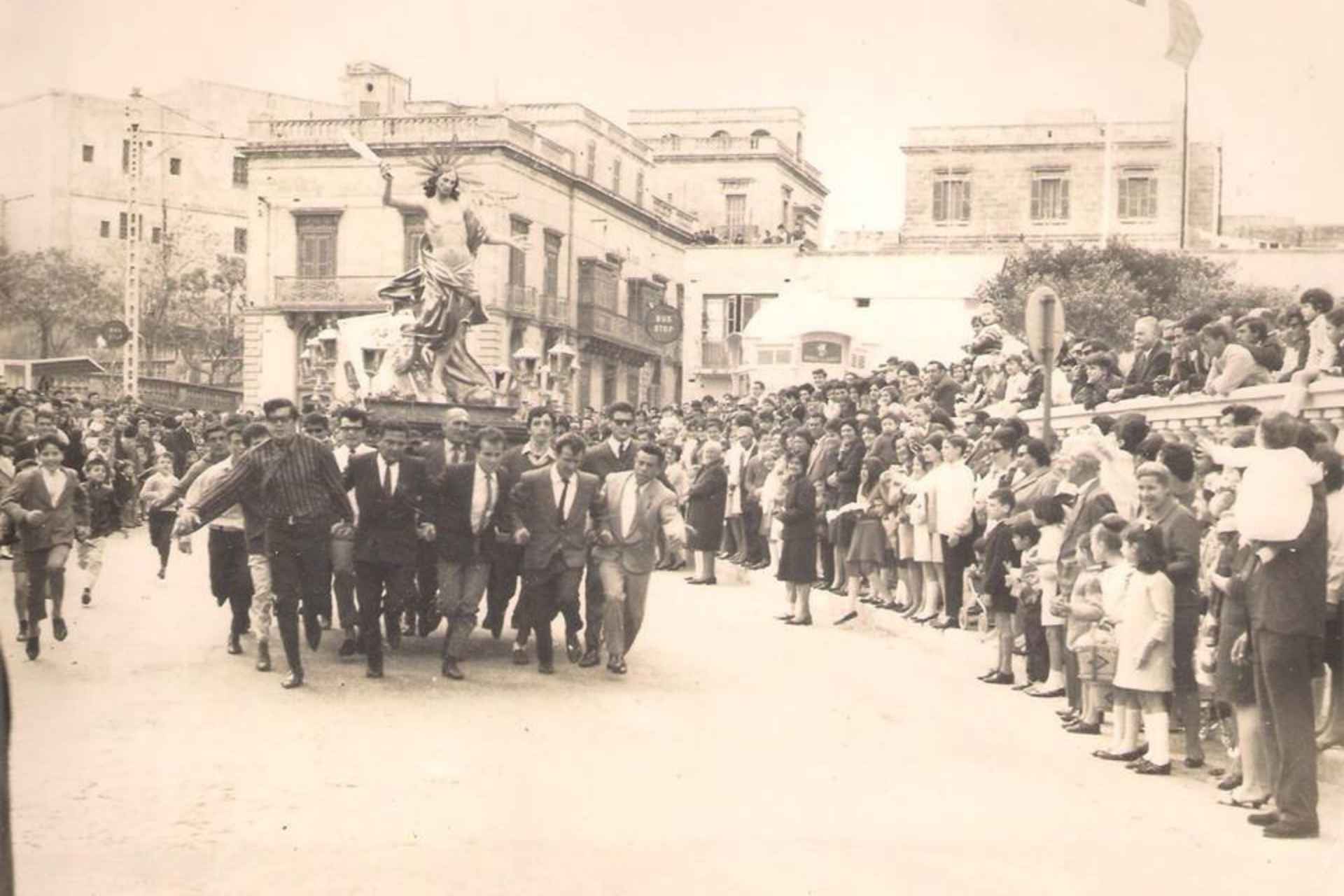
This Maltese custom has been alive for centuries and it doesn't seem to be stopping any time soon. Alongside food traditions, like the famous 'figolli' and other delicacies, Easter Sunday and all the activities leading up to it are what make Malta and Gozo interestingly charming during this period on the calendar.
Learn more about Maltese culture in Yellow's Culture Section here.



